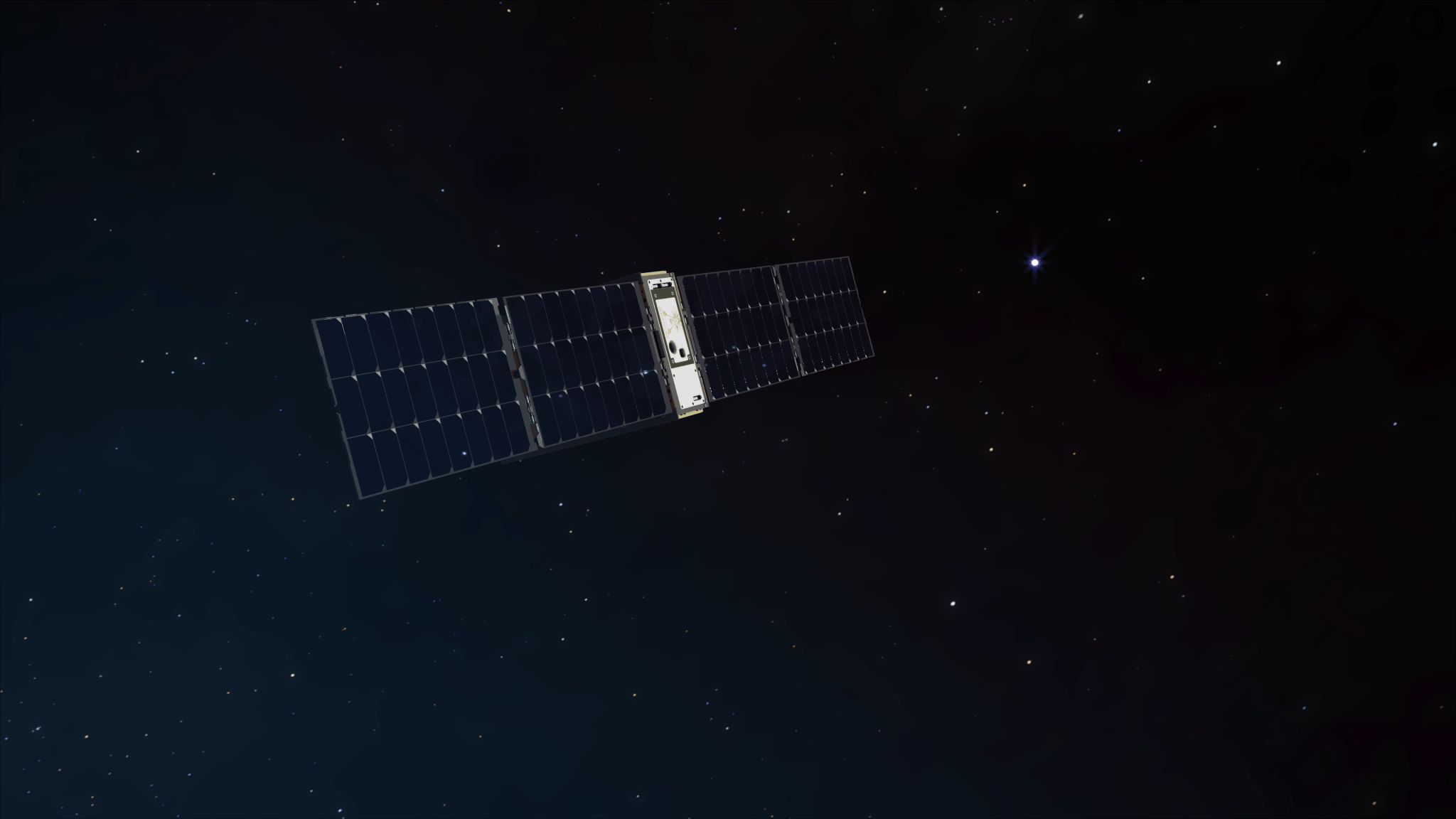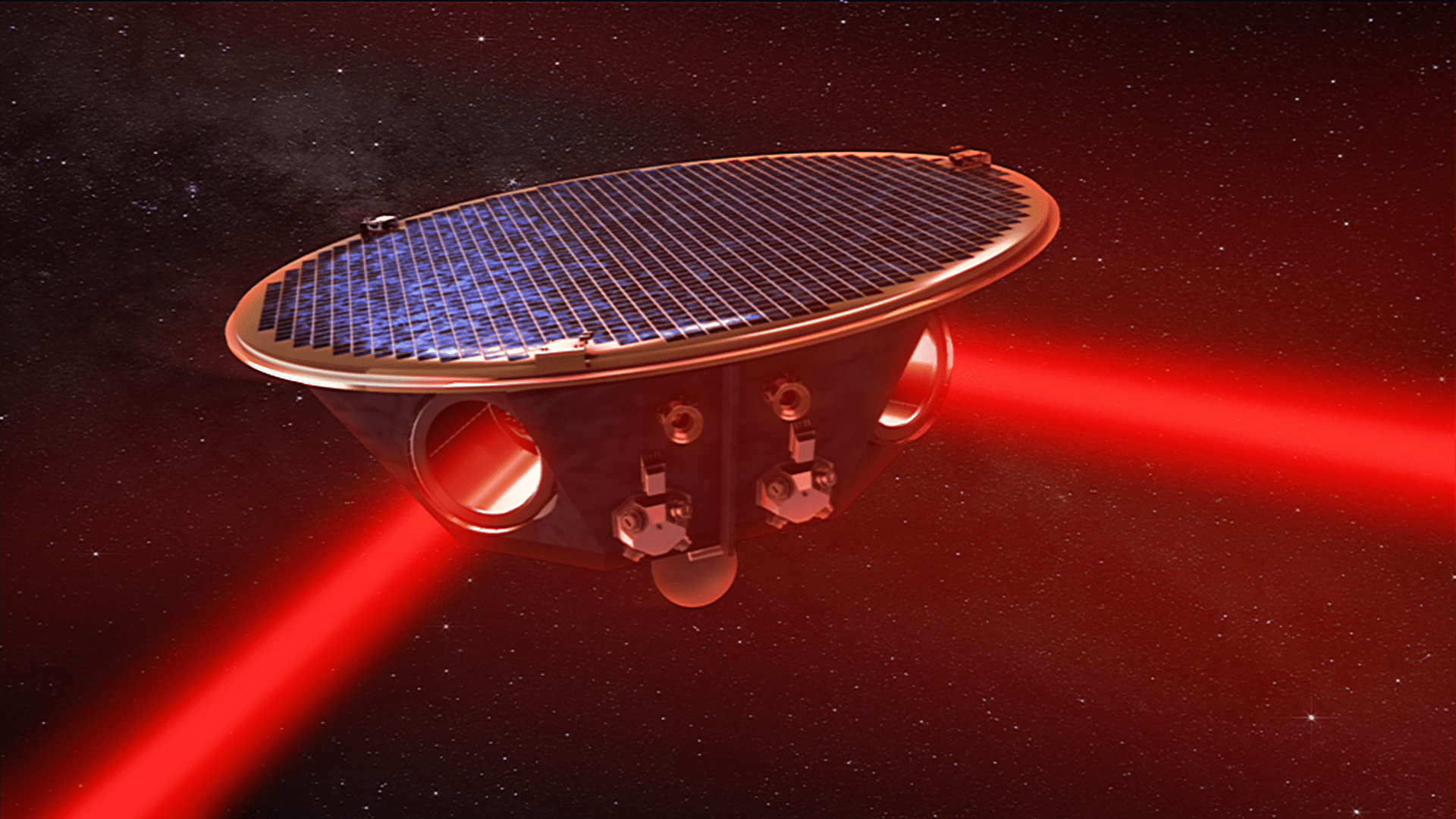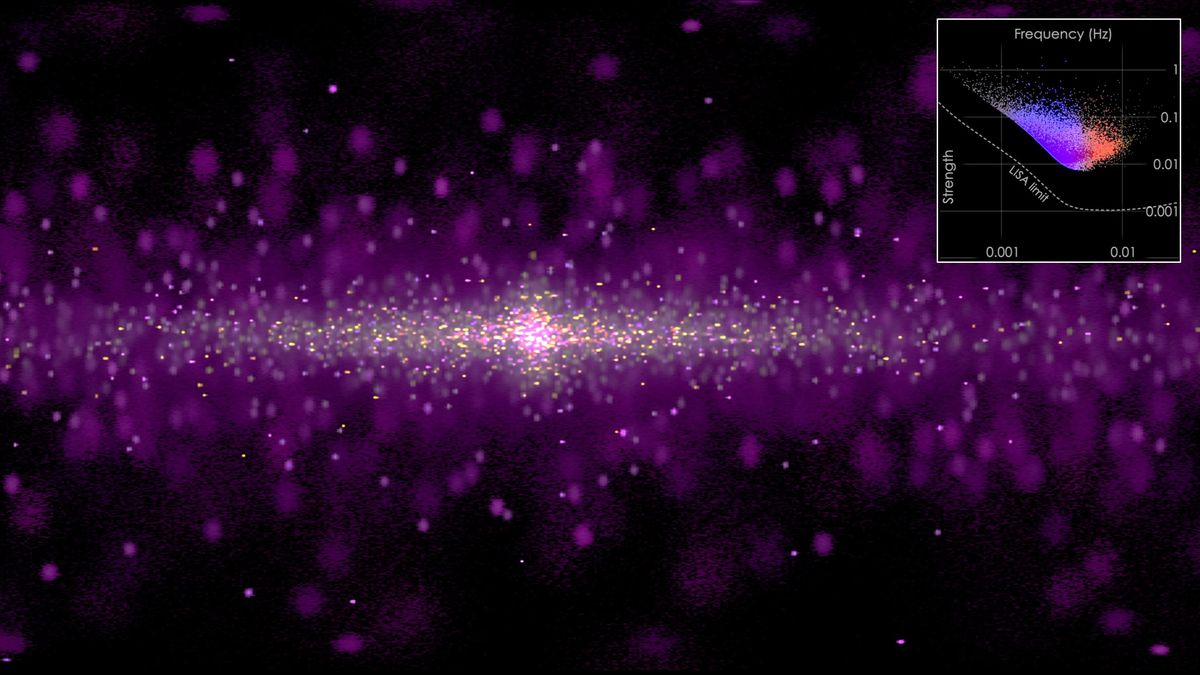4 min read NASA’s Tiny BurstCube Mission Launches to Study Cosmic Blasts BurstCube, shown in this artist’s concept, will orbit Earth as it hunts for short gamma-ray bursts. NASA’s Goddard Space Flight Center Conceptual Image Lab NASA’s BurstCube, a shoebox-sized satellite designed to study the universe’s most powerful explosions, is on its way to the International Space Station. The spacecraft travels aboard SpaceX’s 30th Commercial Resupply Services mission, which lifted off at 4:55 p.m. EDT on Thursday, March 21, from Launch Complex 40 at Cape Canaveral Space Force Station in…
Read MoreTag: gravitational waves
NASA Collaborating on European-led Gravitational Wave Observatory in Space
4 min read NASA Collaborating on European-led Gravitational Wave Observatory in Space The LISA (Laser Interferometer Space Antenna) mission, led by ESA (European Space Agency) with NASA contributions, will detect gravitational waves in space using three spacecraft, separated by more than a million miles, flying in a triangular formation. Lasers fired between the satellites, shown in this artist’s concept, will measure how gravitational waves alter their relative distances. AEI/MM/Exozet The first space-based observatory designed to detect gravitational waves has passed a major review and will proceed to the construction of…
Read MoreHow our Milky Way galaxy would look in gravitational waves (video)
A simulated map of the Milky Way as it would appear in gravitational waves has given a powerful impression of what future space-based detectors will observe. Over 90 gravitational-wave events have been detected so far by the triumvirate of ground-based detectors — the Laser Interferometer Gravitational-Wave Observatory (LIGO) in the U.S., Virgo in Italy and KAGRA in Japan. All these detected events are mergers of stellar-mass black holes and/or neutron stars in distant galaxies; no gravitational-wave events have been found coming from our Milky Way galaxy. However, our galaxy is…
Read MoreThird Gravitational-Wave Catalog Released
The latest results from LIGO, Virgo, and KAGRA bring several key revelations, including that black holes tend to come with certain masses. The post Third Gravitational-Wave Catalog Released appeared first on Sky & Telescope.
Read MoreRedefining a Heavy Collision
Could the biggest — literally — gravitational-wave discovery yet be something other than what it initially seemed? The post Redefining a Heavy Collision appeared first on Sky & Telescope.
Read More

